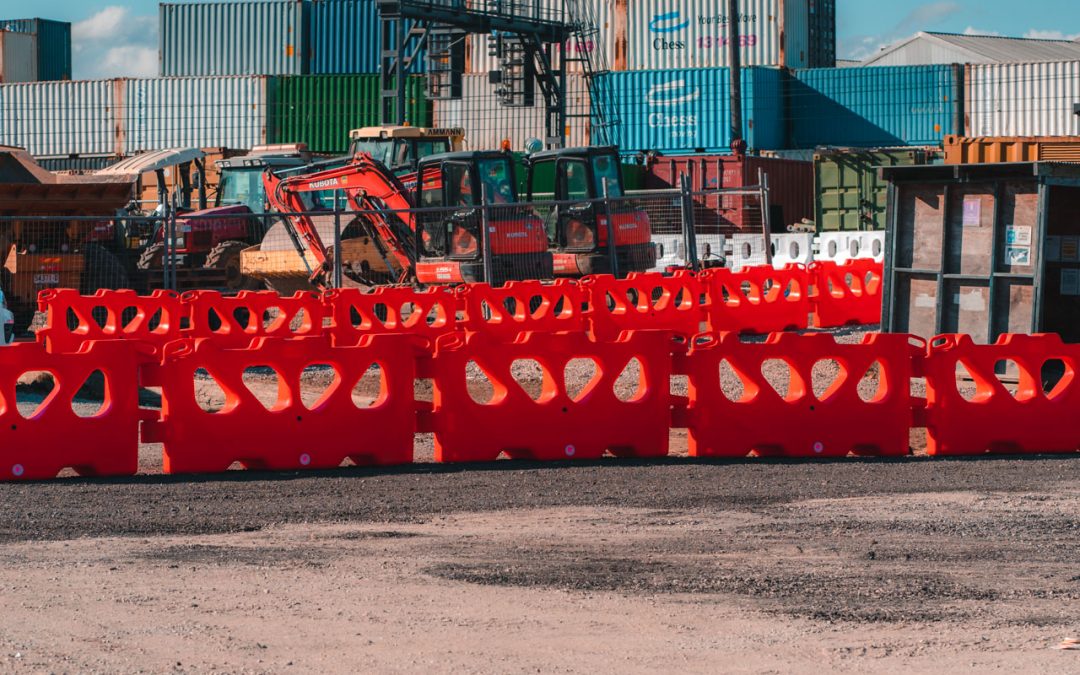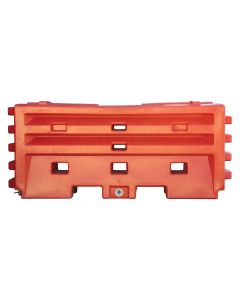Should you buy or hire water filled barriers?

Is it better to buy or hire water filled barriers? Here’s the scoop
There are a lot of waterfilled barriers on the market in Australia. They generally all serve the same purpose - creating a barricade - but some are specifically designed to protect people from fast traffic, and some are simply used for pedestrian delineation.
Once you’ve determined what you’re using the barriers for, you’ll need to decide whether it’s more financially viable for you to buy or hire them, and here’s where advice from our fencing and barriers team can be of benefit.
Having spent decades in the industry providing fast, cheap and effective solutions to contractors, we’re not going to pull the wool over your eyes. If it works better for you to hire, go for it! Either way, we can offer honest unbiased advice.
Our team have experience on both sides of the fence, so to speak and have years of experience in both hire companies and in sales. So, we know a thing or two about cost/benefit ratios and return on investment.
If you’re wanting to hire water filled barriers, give our Fortress Fencing team a call first. Although Jaybro doesn’t specifically offer hire, we can give some honest advice and if it makes better financial sense for you then we can suggest a few hire companies that can help you out. Our barrier expert, Ben Lorne, offers this advice:
"Often very short term projects will gain more savings from hiring. On the other hand, contractors looking for something they can use repeatedly on regular jobs or those quoting up a long term project are likely to find that buying outright works out cheaper in the long run."
If the numbers stack up for you and you decide to buy water filled barriers, there are a few things to think about to make sure you get your money’s worth.
If you choose to buy water filled barriers
Firstly, you should ensure that the barriers you choose are suited to the project or projects that you’re going to be using them on. Ben suggests having a good think about all the potential scenarios you'll be using the barriers, to ensure that you get a good all-round solution that you can use over and over again.
"It’s no good buying the cheapest water filled barrier for your next road project when it may not actually be approved for road use. First up, determine what rules and regulations you need to comply with first then take a look at the selection of water filled barriers that suit your needs.""
Things to ask yourself before buying a water barrier:
- Does it need to be MASH* Tested?
- Do I need a barrier that I can attach higher fences or screens to?
- Do I need to create tight curves with the barriers?
- How am I going to lift or move them when empty?
- Will I need to move them when full of water?
- Do I have specific transport needs or need a low profile barrier (so that more units can fit on a truck?)
- Is a water filled barrier going to fulfil all my potential project needs? (Perhaps you might need concrete barriers for greater protection)
- Do I need water filled barriers at all? (Perhaps water filled barriers are overkill and you could get away with a simple steel crowd control barrier)
After taking a moment to think about the parameters of what you need, you’ll have a better feel for the type of barrier you need to source. If you’ve decided that yes, water filled barriers are definitely the right solution for you, then there’s the next question: ‘which one?’.
What kind of water filled barriers should you choose?
"Aside from their respective MASH test results and speed ratings, water filled barriers generally all do the same thing: the plastic shell is filled with water as ballast, making it very heavy. This serves to stop anything from crowds to fast cars from breaking through to the other side, into your work zone or an off limits area."
Here’s four of the best water filled barriers on the market, all available to buy from Jaybro.
Longitudinal Barriers – MASH TL-1 & TL-2 Tested:
One of Australia's most commonly used traffic rated road barriers. It meets MASH TL-1 and TL-2 criteria for temporary longitudinal barriers. These units weigh 496kg when full of water and are suitable for roads with up to 70km/hr speed limits.
Lo-Ro Barriers – MASH TL-1 & TL-2 Tested:
The Lo-Ro is exclusive to Jaybro & Fortress Fencing – this water filled barrier is MASH tested and has excellent deflection meaning it is ideal for tight or constricted workplaces. It weighs 726kg when full and is approved for 70km/hr speed zones across Australia.
Water-Wall Barriers – MASH TL-1 Tested
Weighing 500kg when full of water, the Waterwall is ideal for all private, local and council roads. Note however that this product is not approved by the national authority Austroads for use on state road networks.
Trafix Water filled barriers: Not MASH Tested
These barriers aren’t crash rated and therefore are ideal for pedestrian control, carparks and within worksites. They weigh 327kg when full.
Advice from our team
For personalised assistance and some indicative cost comparisons between buying and hiring water barriers, give the Fortress Fencing team a call or get in touch with our barrier expert Ben Lorne for more information.
*What does MASH Testing mean?
MASH is a testing methodology for a group of products known as ‘safety hardware’. This includes many items used on and around roads, like barriers, guardrails, crash cushions and other safety devices. There’s also an original testing methodology called NCHRP 350 which was developed decades ago when typical vehicles were smaller and lighter.
Over time, the type and variety of cars and trucks on today’s roads has changed and therefore this newer, more relevant set of testing criteria was developed, known as MASH.
Amongst other things, the weight of the test vehicle and the angle that it impacts the barrier differs between these two tests, and therefore they are rated in different ways.
Most Australian projects and road authorities have now adopted MASH as the necessary criteria for any barriers used on roads. We’ve written more on MASH testing in this article about concrete road barriers.
 Sign In
Sign In 


